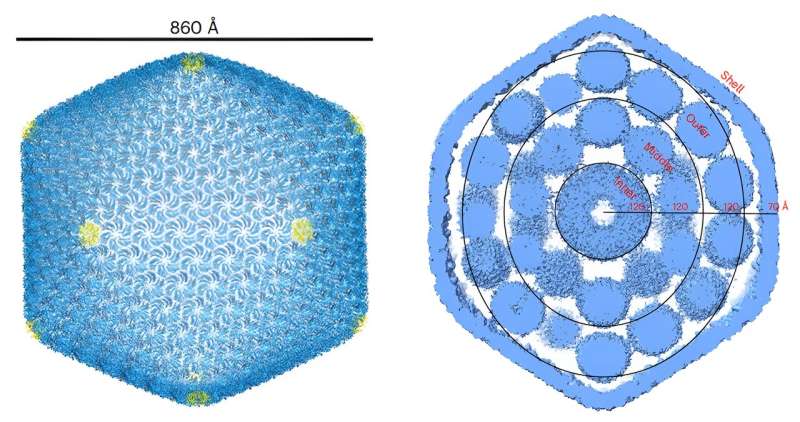Carboxysomes are essential structures found in certain bacteria and algae, aiding in carbon fixation, a crucial process for cellular growth and energy production. Researchers at the Hong Kong University of Science and Technology (HKUST) have made significant breakthroughs in understanding the architecture and assembly of these carboxysomes, potentially leading to revolutionary applications in enhancing photosynthesis efficiency.
Structure and Function of Carboxysomes
- Carboxysomes are minute compartments within bacteria and algae housing specific enzymes enclosed in protein shells.
- They facilitate carbon fixation, converting atmospheric carbon dioxide into organic compounds vital for cellular processes.
- The exact mechanism of carboxysome assembly has been a subject of scientific inquiry.
Research Methodology and Findings
- Utilizing single-particle cryo-electron microscopy, the research team elucidated the structure of α-carboxysomes, particularly from Prochlorococcus bacteria.
- Overcoming technical challenges in cell breakage and contamination, they proposed a comprehensive assembly model for α-carboxysomes.
- The protein shell of α-carboxysomes exhibits a distinctive 20-sided shape with specific protein arrangements.
- RuBisCO enzymes within α-carboxysomes are organized in three concentric layers, held together by a protein called CsoS2.
- The assembly process suggests that carboxysomes are constructed from the outside inward, with CsoS2 playing a crucial role in strengthening the shell and organizing enzymes.
Potential Applications and Future Directions
- Integration of carboxysomes into plant chloroplasts holds promise for enhancing photosynthetic efficiency and crop yield.
- Modification of carboxysome genes may lead to genetically modified cyanobacteria capable of significantly increasing carbon dioxide fixation rates.
- Such advancements could contribute to mitigating global warming by enhancing CO2 removal from the atmosphere.
Multiple Choice Questions (MCQs):
- What is the primary function of carboxysomes?
- A) Energy production
- B) DNA replication
- C) Carbon fixation
- D) Nitrogen fixation
- Answer: C) Carbon fixation
- What imaging technique did the research team use to determine the structure of α-carboxysomes?
- A) X-ray crystallography
- B) Fluorescence microscopy
- C) Single-particle cryo-electron microscopy
- D) Magnetic resonance imaging
- Answer: C) Single-particle cryo-electron microscopy
- What role does the protein CsoS2 play in carboxysome assembly?
- A) Enzyme catalysis
- B) DNA replication
- C) Strengthening the protein shell and organizing enzymes
- D) Transport of molecules across membranes
- Answer: C) Strengthening the protein shell and organizing enzymes
- What potential application of carboxysomes is mentioned in the article?
- A) Water filtration
- B) Solar panel efficiency enhancement
- C) Improving photosynthetic efficiency in plants
- D) Antibiotic production
- Answer: C) Improving photosynthetic efficiency in plants
- How do the research findings relate to mitigating global warming?
- A) By increasing CO2 emissions
- B) By decreasing CO2 emissions
- C) By enhancing CO2 removal from the atmosphere
- D) By accelerating deforestation
- Answer: C) By enhancing CO2 removal from the atmosphere
